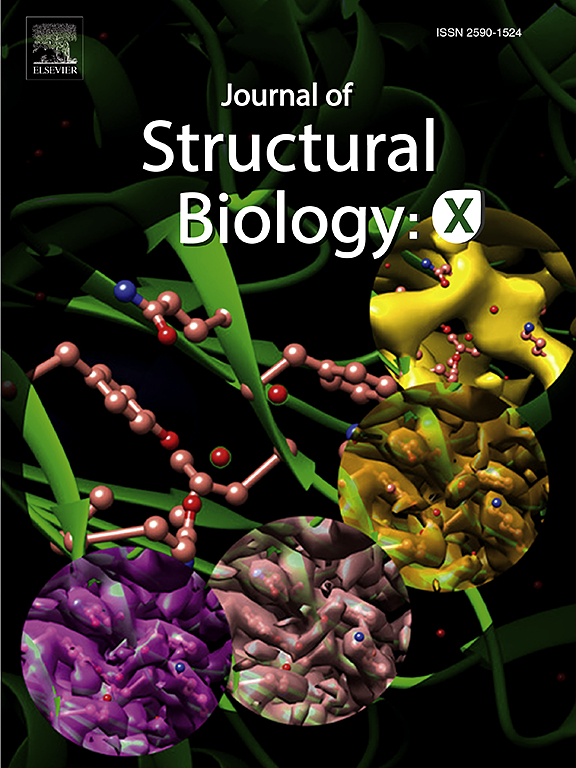Phylogenetic analysis and structural studies of heteromeric acetyl-CoA carboxylase from the oleaginous Amazonian microalgae Ankistrodesmus sp.: Insights into the BC and BCCP subunits
IF 2.7
3区 生物学
Q3 BIOCHEMISTRY & MOLECULAR BIOLOGY
引用次数: 0
Abstract
Acetyl-CoA carboxylase (ACC) is an essential enzyme in fatty acid biosynthesis that catalyzes the formation of malonyl-CoA from acetyl-CoA. While structural studies on ACC components have largely focused on prokaryotes and higher plants, the assembly and molecular adaptations of ACC in microalgae remain underexplored. This study aimed to fill this gap by providing the first structural and evolutionary characterization of both biotin carboxylase (BC) and biotin carboxyl carrier protein (BCCP) from a microalga (Ankistrodesmus sp.). Phylogenetic analysis revealed distinct evolutionary trajectories for BC and BCCP, with BC forming a chlorophyte-specific clade closely related to other oleaginous species, while BCCP displayed two distinct isoforms within green algae, resulting from gene duplication. The crystallographic structure of BC was solved in its apo (1.75 Å) and ADP-Mg2+-bound (1.90 Å) states, revealing conserved conformational changes associated with cofactor binding. BCCP from Ankistrodesmus sp. displayed a unique QLGTF/H motif instead of the canonical AMKXM biotinylation motif, suggesting loss of biotinylation capacity. However, the presence of three additional lysines in the protruding thumb loop, with Lys95 as a candidate for biotin attachment, indicates potential compensatory adaptations. SEC-MALS and pull-down assays confirmed the formation of a stable 1:1 BC-BCCP complex, and circular dichroism showed increased thermal stability of the complex, supporting its structural stability. This study highlights unique structural adaptations in Ankistrodesmus sp. ACC, emphasizing the evolutionary plasticity of BC and BCCP. These insights provide a foundation for future investigations into ACC regulation in photosynthetic organisms and offer potential biotechnological applications for optimizing lipid production in microalgae.

亚马逊产油微藻Ankistrodesmus sp.异聚乙酰辅酶a羧化酶的系统发育分析和结构研究:BC和BCCP亚基的见解
乙酰辅酶a羧化酶(Acetyl-CoA carboxylase, ACC)是脂肪酸生物合成中必需的酶,它催化乙酰辅酶a生成丙二酰辅酶a。虽然对ACC成分的结构研究主要集中在原核生物和高等植物上,但对ACC在微藻中的组装和分子适应的研究仍然不足。本研究旨在通过首次提供微藻(Ankistrodesmus sp.)生物素羧化酶(BC)和生物素羧化载体蛋白(BCCP)的结构和进化特征来填补这一空白。系统发育分析揭示了BC和BCCP的不同进化轨迹,BC形成了一个与其他产油物种密切相关的绿藻特异性分支,而BCCP在绿藻中表现出两个不同的亚型,这是由于基因重复造成的。BC的晶体结构在apo (1.75 Å)和ADP-Mg2+结合(1.90 Å)状态下被解析,揭示了与辅因子结合相关的保守构象变化。Ankistrodesmus sp.的BCCP表现出独特的QLGTF/H基序,而不是典型的AMKXM生物素化基序,表明其丧失了生物素化能力。然而,在突出的拇指环中存在另外三个赖氨酸,Lys95作为生物素附着的候选物,表明潜在的代偿适应。SEC-MALS和pull-down实验证实形成了稳定的1:1 BC-BCCP配合物,圆二色性表明配合物的热稳定性增强,支持其结构稳定性。本研究强调了Ankistrodesmus sp. ACC独特的结构适应性,强调了BC和BCCP的进化可塑性。这些见解为未来研究光合生物ACC调控提供了基础,并为优化微藻脂质生产提供了潜在的生物技术应用。
本文章由计算机程序翻译,如有差异,请以英文原文为准。
求助全文
约1分钟内获得全文
求助全文
来源期刊

Journal of structural biology
生物-生化与分子生物学
CiteScore
6.30
自引率
3.30%
发文量
88
审稿时长
65 days
期刊介绍:
Journal of Structural Biology (JSB) has an open access mirror journal, the Journal of Structural Biology: X (JSBX), sharing the same aims and scope, editorial team, submission system and rigorous peer review. Since both journals share the same editorial system, you may submit your manuscript via either journal homepage. You will be prompted during submission (and revision) to choose in which to publish your article. The editors and reviewers are not aware of the choice you made until the article has been published online. JSB and JSBX publish papers dealing with the structural analysis of living material at every level of organization by all methods that lead to an understanding of biological function in terms of molecular and supermolecular structure.
Techniques covered include:
• Light microscopy including confocal microscopy
• All types of electron microscopy
• X-ray diffraction
• Nuclear magnetic resonance
• Scanning force microscopy, scanning probe microscopy, and tunneling microscopy
• Digital image processing
• Computational insights into structure
 求助内容:
求助内容: 应助结果提醒方式:
应助结果提醒方式:


